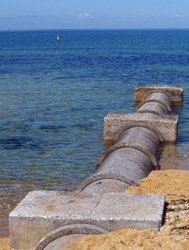Biotests measure ecotoxicity in stormwater
The DAYWATER project carried out a major study into the potential biological or chemical stress placed by stormwater on ecosytems. The environmental impact was found to vary between storms at each sampling site and between the sites themselves. The effect also varied according to the type of test organism studied. A series of biotests were carried out by the EU funded project DAYWATER using Microtox, algal and rotifer tests. The Microtox test uses a luminescent bacterium which, when damaged by pollutants, emanates less light. The results showed that of the three tests administered the Microtox test was the most sensitive when measuring toxicity levels. However, use of a range of biotests resulted in a higher detection rate than merely relying on a single test. This approach enabled toxicity to be detected in whole samples and for samples to be ranked according to their toxicity. Addition of the chelating agent ethylene diamine tetraacetic acid (EDTA) was found to reduce sample toxicity. The conclusion was that metals make a major contribution to toxicity, with concentrations of metals varying between storm events. Resuspension tests indicated a possible toxic effect as a result of contaminants bound to sediments. In future, toxicity tests and chemical analysis should be applied to sediments and runoff water in order to identify any pollutants present. At the time of the study, mainly chemical analysis was used to assess hazard and vulnerability to stormwater discharges. Chemical analysis however supplies information regarding a single compound rather than the toxicity of a whole sample. Therefore, the work undertaken by DAYWATER underlines the importance of biotests for detecting and ranking toxicity for whole stormwater samples and for studying the vulnerability of ecosystems. The project recommended that a biotest approach be included in any regulatory framework, particularly when setting up a monitoring strategy.







